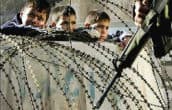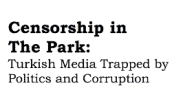|
|
Ethical Journalism News
|
| The summer months in the northern hemisphere are sometimes called the “silly season” for news when politicians are on vacation and journalists are scratching around for stories, but this year is different. Wars in Syria, Ukraine and particularly the upsurge in violence in the Gaza Strip have dominated the media space and provided massive ethical challenges for newsrooms.
Continue …
|
|
|
|
| Of all the running stories in modern times, none has proved to be more challenging and threatening to notions of objective journalism than the Arab-Israeli conflict. The latest upsurge in violence in Gaza has once again put a spotlight on how media are reporting from Palestine and Israel. With hundreds of journalists on the spot it has been impossible for political spin on either side to throw a cloak over the reality of unprecedented violence in which at least 1500 Palestinian civilians including eight journalists have died.
Continue …
|
|

|
|
| As much as journalists may try to be completely objective, the reality is that behind the ink on the paper there is a reporter who has his or her own experiences and views of the world. Nowhere is this more evident than the coverage of the current Gaza crisis where only the most cold-hearted person would be unaffected by the bloody casualties, particularly the images of children being sacrificed to war. In these circumstances emotions run high, but can journalists remain neutral, or should the audience be privy to the reporter’s emotional reactions as well as to fact-based story-telling?
Continue …
|
|

|
|
| With a perceived rise in radicalism and hate speech perpetuated in the media in Africa, media leaders from across the continent have launched a campaign against hate speech in the press.
Continue …
|
|

|
|
| Zloy_Odessit began his blog back in March, though he claims he’s “no novice to the blogosphere.” He started his blog in reaction to what he sees as “the Russian occupation of Crimea,” saying he writes to combat disinformation and express his own point of view. “The main aim of my blog is to get across my opinion on events in Ukraine to the Russian user.” (via Global Voices) |
|
| An article with an arresting headline appeared in the most-viewed box on our website at the end of last week: “Israeli officer: I was right to shoot 13-year-old girl.” But the article was not a report about the current situation in Gaza: it was nearly 10 years old, having been published in November 2004. (via The Guardian) |
|
| While the laws about distributing images through social media channels likes Facebook, Pinterest, Google+, and blog are still fuzzy, it is generally considered acceptable to redistribute an image that was originally intended to be publicly viewed by the creator. (via Digital Information World) |
|
| Debate continues over the lowering of publication standards within mainstream media newsrooms, as coverage of the MH17 catastrophe and the war in Gaza are illustrated by shockingly graphic images. Is the creeping influence of social media partly to blame for the shift? And what are the potential impacts? (via WAN-IFRA) |
|
| “When journalists cannot interview agency staff, or can only do so under surveillance, it undermines public understanding of, and trust in, government. This is not a ‘press vs. government’ issue. This is about fostering a strong democracy where people have the information they need to self-govern and trust in its governmental institutions.” (via New York Times) |
|
| The financial challenges of the journalism industry have resulted in significant declines in the number of employed reporters, editors, anchors and photographers. Minority journalists, who were already underrepresented in newsrooms, have, for the most part, experienced the same type of decline in recent years. (via Pew Research Center) |
|
Reports & Resources
|
| The detailed report Censorship in The Park: Turkish Media Trapped by Politics and Corruption by the Ethical Journalism Network is an in-depth investigation into the self-censorship and threats to independent journalism during and after sweeping anti-government protests which took place across Turkey last year.
Continue …
|
|

|
|
| An EJN report reviewing the media coverage of the Innocence of Muslims, a short film trailer produced by a religious activist and distributed over the Internet, which became the spark for protest and violence across the globe and leading to at least 75 deaths.
Continue …
|
|

|
|
Events
|
African Media Leaders Forum
Johannesburg, South Africa
12 – 14 November 2014: AMLF 2014 will bring together industry experts in Johannesburg, rights activists, journalists and, of course, media owners and leaders from across Africa to seek practical solutions to persistent problems that plague the sector. It will seek to address the questions of how to build a boardroom culture that is committed to editorial independence and good governance as a means of “Turning the Page on Hate Speech.” |
|

|
|
|
|
|
|